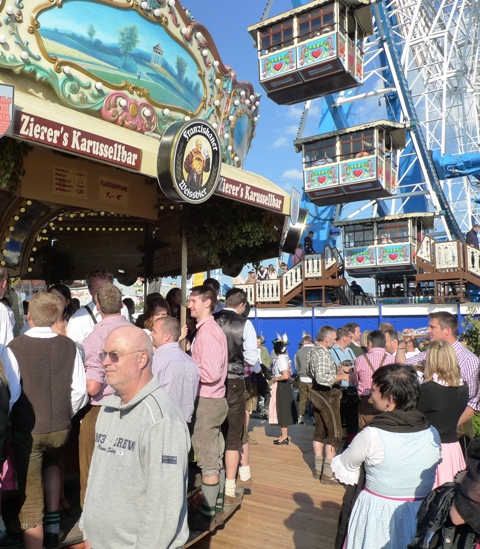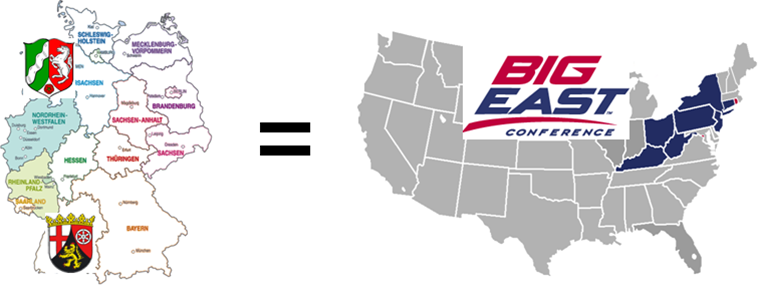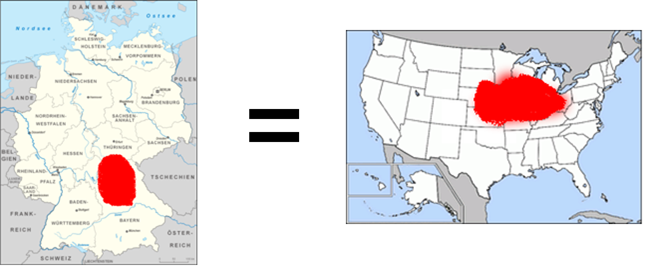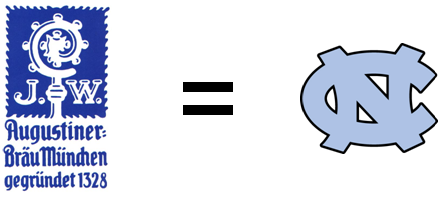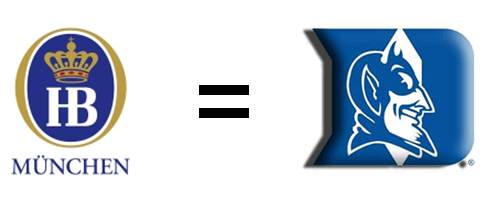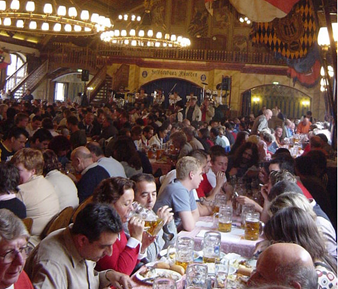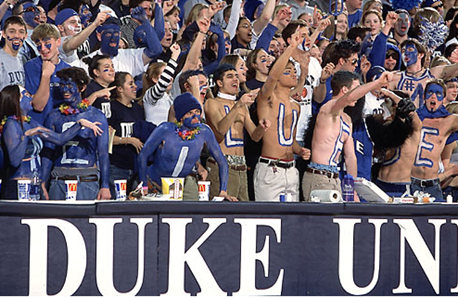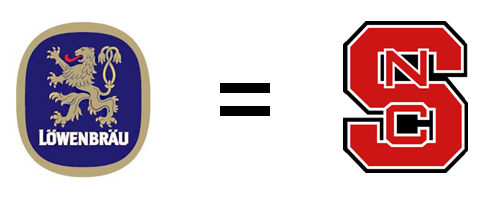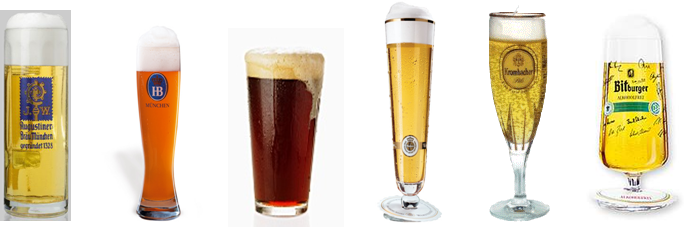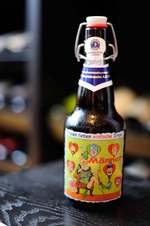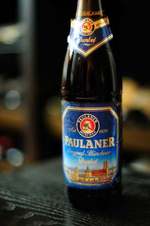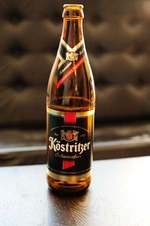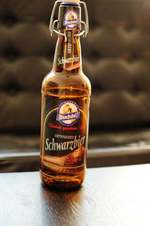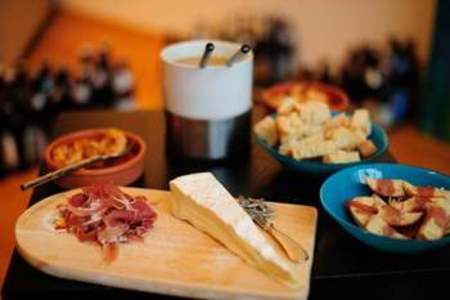Feeling Tarty: The First Dunkelweißbier Round
 Sunday, November 21, 2010 at 12:25
Sunday, November 21, 2010 at 12:25 The German Beer Wars have also been a great excuse to play around in the kitchen. Luckily I have a willing guinea pig who will eat almost anything.
Tonight’s competitors: Dunkel Weißbier and 3 courses of tarts.
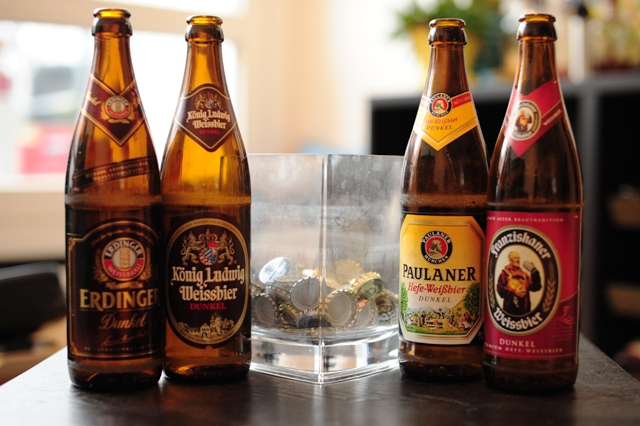 Tonight's Competitors, and the growing collection of bottlecaps
Tonight's Competitors, and the growing collection of bottlecaps
We kicked off the Dunkel Region with some Dunkelweißbiers from the Bavarian heavy hitters Paulaner, Erdinger, Franziskaner, and König Ludwig. Erdinger and Franziskaner make only Weißbier - Erdinger is a private brewery outside Munich that brews 9 varieties, including seasonal, light, and non-alcoholic; Franziskaner brews 5 varieties and is part of the Spaten-Löwenbräu-Gruppe, now owned by Anheuser-Busch InBev. Of the 5 Franziskaners, we have 3 in the tournament (the other two are Light and Alcohol-Free, thus not in the competition).
König Ludwig, the royal brewery, brews a wide variety of beers, covering the main types and seasonal and regional beers. Their weißbiers are pretty well-regarded around here, so we were curious to see how they stacked up with the wießbier specialists.
In the first competition pitting Erdinger Dunkel vs König Ludwig, we found the König Ludwig to be extremely smooth and drinkable. It was surprisingly light for a dunkelweißbier, which is why we had to pick the Erdinger Dunkel as the winner. It had a lovely dark color and wonderful classic dark beer flavoring combined with the sweetness and fullness of the weißbier.
In the second, the Franziskaner beat out Paulaner's Hefe-Weissbier Dunkel due to it's slightly more complex flavorings.
The next round was similar, with the Erdinger noticeably darker and more flavorful than the Franziskaner. We'd happily drink either, but the Erdinger just had a better, richer taste and therefore earns a spot in the Sweet Sixteen.
In terms of the food, all three were winners and the beef pie is always a crowd pleaser (and better yet, simple to make and freeze for later).
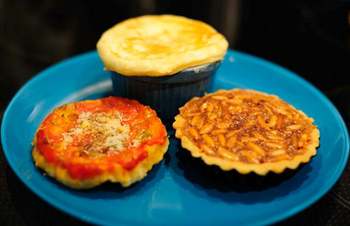 Tomato Tarts, Schwarzbier Beef Pie, and Pine Nut Tartelettes
Tomato Tarts, Schwarzbier Beef Pie, and Pine Nut Tartelettes
Yes, yes, I know.... the beef pie isn’t exactly a tart, but it’s a great excuse to buy cute little ramekins…which just means I need to make chocolate lava cakes now! Here are the recipes:
Tomato and Caramelized Onion Tartelettes – adapted from a BBC recipe here
This one works pretty much true to the recipe, other than I always need to add a little cold water when making the dough. It makes an impressive looking and tasty large tart. For tonight, I just made it in 4 tartelette pans rather than one large tart.
Schwarzbier Mini Beef Pies – adapted from an Australian recipe (I've also made with Guiness and it's equally tasty. Will try with Starkbier and some of the more flavorful Dunkelbiers soon)
Ingredients: (Makes 6-8 pies, depending on your ramekin size)
- 2 kg (4.4 lbs) roast beef ("rinderbraten" in German supermarkets)
- 3 sliced onions
- 4 cloves garlic, minced
- 2 Tbsp oil
- 2/3 cup flour
- 400 mL (1 3/4 cups) Schwarzbier
- 475 mL (2 cups) beef broth
- Puff pastry (Tante Fanny's here is perfect and flaky)
- 1 egg, beaten
Instructions:
-
Cut roast beef into cubes and chop in batches in food processor. (Alternately you could use ground beef, but this has a better result)
-
In a large pot, brown the beef in 1 Tbsp oil, then set aside. In the same pot, cook the sliced onions and garlic in the remaining oil until golden. Sprinkle in 2/3 cup plain flour and cook for 1 min.
-
Return the meat to the pot with the onions. Add the Schwarzbier and beef stock, and bring to a boil. Reduce heat, cover the pot, and simmer for 1 1/2 hours until tender. Uncover and continue to cook until sauce has reduced and thickened.
-
Preheat oven to 200°C (390°F). Spoon beef mixture into ovenproof ramekins. Cut out circles of the puff pastry to cover - size should be slightly larger than the top of the ramekin. Press pastry firmly onto dishes and seal. Brush with the beaten egg, place on a tray and bake for 25 minutes until golden.
I often make larger batches to freeze. After step 3, wrap in plastic wrap, then in foil to freeze. Make sure to thaw fully before cooking.
Pine Nut Tartelettes – from Tartelette
This one works exactly as written...it will seem that the dough will never come together, but in the end it does work and is worth the effort!
(If you haven’t discovered her blog yet, head on over there….the recipes always work out perfectly and the pictures are beautiful!)
 Frau A ...
Frau A ...  Post a Comment
Post a Comment  Beer,
Beer,  Food, Cooking, & Dining tagged
Food, Cooking, & Dining tagged  beer,
beer,  beer bracket,
beer bracket,  beer tournament,
beer tournament,  cooking,
cooking,  favorite food ...
favorite food ...  Print Article
Print Article  Email Article
Email Article 





